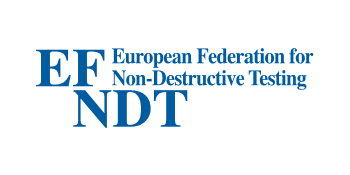Acoustic Emission
Professional Group 09 — Acoustic Emission is part of the Czech Society for Non-Destructive Testing (CNDT). It brings together experts in the research, development, and industrial applications of the Acoustic Emission (AE) method. Acoustic emission is elastic waves resulting from the sudden release of energy in a material or process.
Possible applications of AE in NDT:
Assessment of the integrity of materials (metals, plastics, rocks, building materials)
Non-destructive diagnostics - non-destructive inspection of steel and fibreglass (composite) pressure vessels and piping, including leak checking
mechanical component integrity monitoring and lifetime prediction
online method for indicating the need for service intervention in machines (friction, bearings) and technological processes (chip machining, welding)
Thus, we can encounter the following applications of AE:
- in the chemical industry (steel and plastic pressure vessels and storage tanks, leak tightness of pipelines and storage tanks, machine condition monitoring, monitoring of ongoing chemical reactions),
- in the power industry (nuclear power plants - monitoring of medium leakage, corrosion, residual life of pressure vessels, localization of active defects, monitoring of partial discharges and corona formation),
- in the construction industry (loading of steel structures, concrete, building elements),
- in the electrical industry (testing of layered and tantalum capacitors, hybrid IO production, testing of superconducting magnets),
- in the aerospace industry (testing properties of alloys and composite materials, determining residual life, monitoring fatigue cracking),
- in geology (monitoring ground displacements), in medicine, for monitoring hydraulic and pneumatic systems and in many other applications
The main advantages include:
Integrality (covers the entire object), fast measurement preparation, remote detection and localization of defects, high sensitivity, reliability, 100% control of even massive objects (pipelines, pressure vessels, bridges, airframes) with a relatively small number of sensors, only partial access to the monitored device is required, the measured AE signal is in the order of hundreds of kHz, i.e. Finally, the relatively low cost and simplicity of the necessary equipment for signal processing and evaluation.
Two main advantages stand out in particular in comparison with other non-destructive diagnostic techniques: thanks to the high sensitivity, defects at an early stage that are not yet detectable by classical methods (ultrasound, irradiation) can be detected, and secondly, only active defects manifested under load are detected.
Contact information
Chairman:
Ing. Václav Svoboda
Tel: +420 602 331 005
svoboda@preditest.cz
Secretariat:
Ing. Eva Svobodová
Preditest, s.r.o.
Pod Višňovkou 1662/23
140 00 Prague 4 - Krč
Tel: +420 725 818 772
Account No: 1930011309/0800



